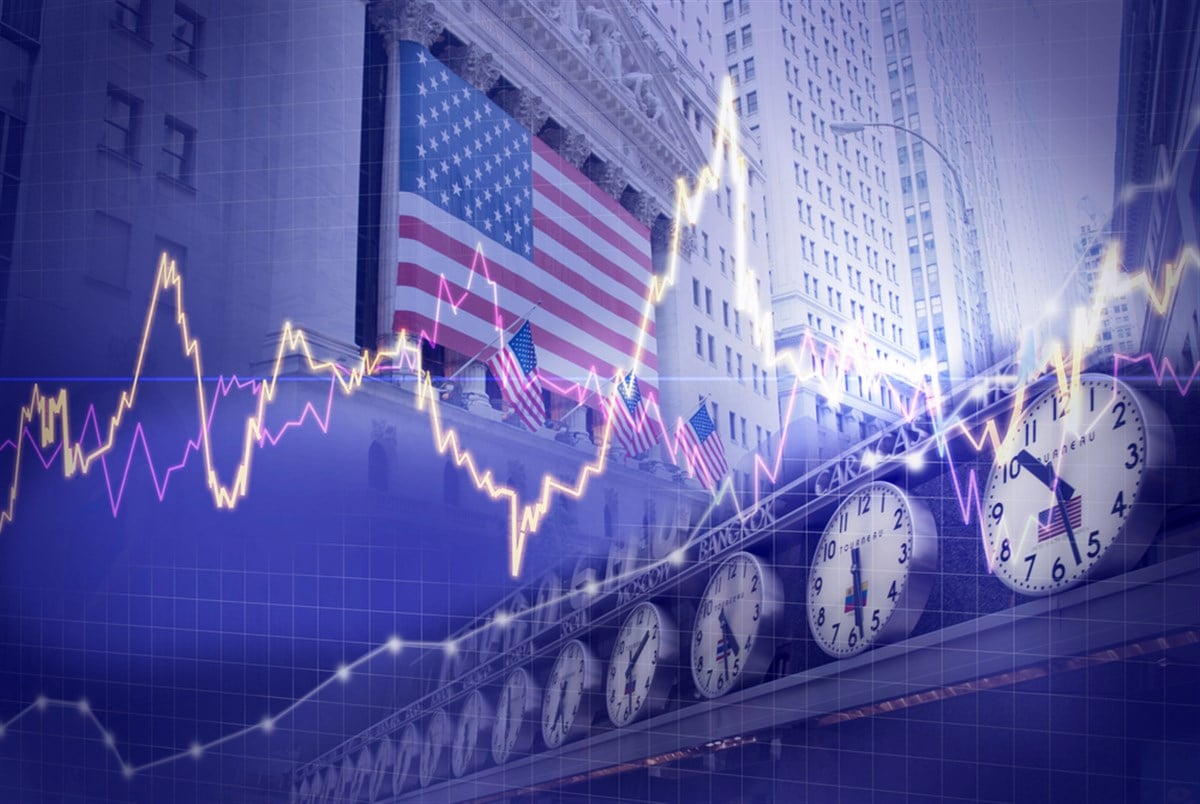| Written by Leo Miller 
Broadcom (NASDAQ: AVGO) just got a new price target that signals significant upside ahead for the stock. On Monday, Blayne Curtis of Jefferies reiterated his buy rating on the chip giant and boosted his price target from $300 to $315. As of the July 1 close, Broadcom trades at just under $265 per share. Meanwhile, the MarketBeat consensus price target on Broadcom is just over $281. This average target implies only around 6% upside in shares. However, Curtis is significantly more optimistic. His new target suggests Broadcom could rise three times more, implying nearly 19% upside. One key part of Curtis’s analysis stands out when it comes to the possibility of Broadcom stock eclipsing the $300 mark. Broadcom’s AI Chips: How Networking Can Help Lead the Stock to New Highs Broadcom’s application-specific integrated circuits (ASICs) and networking chips make up its all-important AI semiconductor business line. ASICs are the chips that Broadcom develops for AI training and inference workloads. They are competitors and complements to NVIDIA’s (NASDAQ: NVDA) ever-popular graphics processing units (GPUs), depending on the context. ASIC sales are what the market really looks at when deciding whether to upgrade or downgrade Broadcom. Meanwhile, Broadcom makes networking chips for AI data center switches and routers. Switches and routers control the flow of information between different AI data center components. Tomahawk and Jericho are the company’s flagship networking chip families. The exciting aspect of Curtis’s analysis is these networking chips. It is well known that Broadcom currently has three hyperscale customers and four potential ones for its ASIC business. These current and potential customers account for the seven that Curtis cites. However, Curtis mentions that five of these hyperscalers are already networking customers. If Curtis is right, this information significantly boosts Broadcom’s overall upside. To push shares to new highs, markets want to see Broadcom convert its potential ASIC customers to actual ones. The fact that Broadcom didn’t make an announcement like this last quarter is a large reason why shares sold off post-Q2 earnings. Curtis’s analysis indicates that multiple of Broadcom’s potential ASIC customers are already networking customers. This existing relationship increases the likelihood that they will also become ASIC customers. Thus, the idea that Broadcom shares can move higher based on potential ASIC customer conversion is more likely to play out. Tomahawk 6: Broadcom’s Unsung Growth Engine The link between ASIC customer conversion and networking chips is particularly important now. This is because of the recent launch of Broadcom’s Tomahawk 6 networking chip. A Tomahawk 6 chip can facilitate the transfer of twice as much data as any other. This allows Broadcom to capitalize on a trend it is seeing in networking. Data centers are increasingly shifting toward Broadcom’s Ethernet technology to support "scale-up" architecture. This is where servers become denser, packing more computing power into the same amount of space. Tomahawk 6’s industry-leading bandwidth makes it ideally positioned to serve this need. Doubling the bandwidth means that users can connect twice the number of components to it without sacrificing performance. This allows for a denser server architecture (scale up), which is the exact opportunity that Broadcom is seeing. Additionally, the prowess of Tomahawk 6 could increase Broadcom’s potential to cross-sell ASICs. In this way, Tomahawk 6 positions Broadcom to increase networking revenue and gain ASIC customers. AVGO: $315 Is Far From Unrealistic Curtis’s analysis points to one key fact: investors should not overlook the networking piece of Broadcom’s AI chip revenue. Networking chips accounted for 40% of total AI revenue last quarter. Sales of these chips grew by 170% last quarter, more than three times the 46% growth rate of total AI semiconductor revenue. Importantly, this brisk growth rate came before Tomahawk 6 was even available. Overall, Broadcom has multiple avenues through which it can continue to grow impressively, whether it be ASICs, networking, or VMware. The company is clearly confident in its future. It spent over $4.2 billion on buybacks last quarter, the second-highest amount of quarterly repurchase spending in its history. With leading tech and the chance to gain big new customers, Broadcom shares could hit $315.  Read This Story Online Read This Story Online |  |
| Written by Jeffrey Neal Johnson 
AeroVironment (NASDAQ: AVAV) investors have been on a stomach-churning rollercoaster. The unmanned systems leader saw its stock price surge to a new 52-week high, reaching nearly $295 per share, after releasing a blockbuster earnings report on June 24, 2025. The stock reversed course days later, suffering a sharp, double-digit percentage decline. The catalyst for this sudden drop was a July 1 announcement: a plan to raise nearly $1.5 billion in fresh capital. The market’s reaction was textbook, selling off on the prospect of share dilution. A closer look suggests this was a calculated move made from a position of strength. This financial maneuver appears designed to fuel a new era of growth, potentially creating a significant opportunity for investors who look beyond the short-term market noise. From Record Bookings to a Fortified Balance Sheet AeroVironment's recent financial strategy shift makes sense only when viewed through the lens of its operational success. The company's fiscal fourth-quarter and full-year 2025 report revealed that the business was experiencing a historic surge in demand, driven by the proven effectiveness of its systems in global conflicts. This created a high-quality problem: an urgent need to expand operations to meet a flood of new orders. The numbers provided by AeroVironment are compelling. The company secured a record $1.2 billion in new bookings during the fiscal year, a healthy indicator of future business growth. This success helped build a funded backlog of confirmed, contracted future revenue that has grown to around $727 million, nearly double the figure from the previous year. This performance directly translated to the bottom line, with record fourth-quarter revenue reaching $275.1 million, a 40% year-over-year increase. Unsurprisingly, management issued highly confident guidance for fiscal 2026, projecting revenue to land between $1.9 billion and $2.0 billion. This is the critical context for raising capital. AeroVironment isn't raising money to fix a problem; it's raising money to manage its success. The approximately $1.47 billion in proceeds is being deployed with two clear objectives: - Strengthening the Balance Sheet: Approximately $965.3 million is allocated to pay down debt, primarily from the recent $2.0 billion strategic acquisition of BlueHalo. This is a financially prudent move that reduces risk, lowers future interest costs, and provides greater stability for the company going forward.
- Investing in Growth: The remaining funds are dedicated to expanding manufacturing capacity. This is the crucial link between record orders and future revenue. To deliver on its massive backlog, AeroVironment must be able to build its drones and munitions faster. This investment directly addresses that need.
A Technical Pullback Making a Strategic Entry Point When a company issues new stock, it can dilute existing shareholders' ownership stake, often triggering a temporary, technical dip in the share price. This is essentially what happened to AeroVironment. However, this pullback may offer an attractive entry or accumulation point for investors who watched AeroVironment’s stock price achieve an impressive 94%-plus run over the past three months. The decline was driven by the mechanics of the offering, not a change in the company's positive business outlook. Long-term investors often view such technical dips as opportunities to build a position in a strong company at a better price. This bullish perspective is echoed by AeroVironment’s analyst community. Following the outstanding earnings report, the consensus rating from 14 analysts remains a Buy. The price targets are even more telling. Goldman Sachs (NYSE: GS) initiated coverage with a Buy rating and a $301 price target, while BTIG Research raised its target to $300. These figures suggest that financial experts see significant upside that extends far beyond the temporary effects of the capital raise. Their analysis points to the fundamental strength of the business and its dominant position in the defense technology sector. Reading Between the Lines AeroVironment’s decision to raise capital is a proactive and strategic response to its remarkable success. It is a sign of a forward-looking management team preparing for a significant phase of expansion, not a company in distress. By fortifying its balance sheet and investing directly in its capacity to deliver on a record order book, AeroVironment is paving the way for its next chapter of growth. For investors with a long-term outlook, the market's knee-jerk reaction to a prudent financial strategy may have created a compelling opportunity to invest in an industry leader as it scales up for the future.  Read This Story Online Read This Story Online |  |
| Written by Leo Miller 
In 2025, two of the market's best-performing stocks of the year aren’t AI-focused tech companies but rather two of the United States' largest government-sponsored entities (GSEs). These stocks are Fannie Mae (OTCMKTS: FNMA) and Freddie Mac (OTCMKTS: FMCC). Respectively, these names have provided total returns of approximately 145% and 181% in 2025, as of the July 1 close. So, how is President Trump driving the massive gains in these finance stocks, and what's on the horizon? Privatization Possibilities: The Massive Force Behind Freddie and Fannie’s Surge The reason for the rapid rise in Fannie and Freddie’s share prices is the increasing possibility that the two could become private companies. Comments from President Trump are driving this idea. But, before getting into them, it’s important to understand what Fannie and Freddie do. Fannie and Freddie issue mortgage-backed securities (MBS), which they guarantee to pay. When sold by private companies, MBSs are far riskier fixed-income investments that make interest payments based on people paying their mortgages. However, as the financial crisis has proven, people paying their mortgages is far from a sure thing. Mortgage defaults caused a breakdown of the private MBS market, leading to plummeting home prices and creating a wider economic disaster. That’s why, after 2008, the government placed Fannie and Freddie under conservatorship. Hundreds of billions in funding from the U.S. Treasury backstop the MBS they issue. If too many people default on their mortgages today, the U.S. Treasury will step in to make MBS holders whole. This helps prevent a future crisis. However, due to the conservatorship, the U.S. Treasury also receives all the profits Fannie and Freddie generate. This means that Fannie and Freddie cannot pay out dividends or buy back stock. They also must operate under strict rules that limit their profit-making abilities. However, President Trump could change this. On May 21, Trump said he is giving "very serious consideration to bringing Fannie Mae and Freddie Mac public." Although the wording is confusing, he is referring to ending the conservatorship. He wants to give control of Fannie and Freddie back to private shareholders, rather than the government. The next day, shares jumped 51% and 42%, respectively, showcasing the enthusiasm of many investors. So, why exactly does the potential for these names to become private again have many investors excited? Pre-2008 Valuations Show the Past Investors Hope to Rekindle Going private would allow Fannie and Freddie to pay out dividends and buy back stock—two key ways to return capital to shareholders. Additionally, it would unlock their ability to generate profits. Instead of having to send their profits to the government, they could invest in new growth areas. The attractiveness to investors of the two becoming private is clearly demonstrated by looking at their market capitalizations before 2008. On July 1, 2007, Fannie’s market cap was approximately $65 billion, while Freddie’s was around $41 billion. Prior to Election Day in 2024, those numbers were around $7.5 billion and $4 billion, respectively. Since Nov. 1, Fannie shares are up approximately 600% and Freddie shares are up 550%. As of the close on July 1, 2025, Fannie's market cap reached over $52 billion, while Freddie hit over $25 billion. Trump’s statements are driving all of this, as he floated privatization during his first term. So, where does this all leave investors now when it comes to Fannie and Freddie? Speculative: Fannie and Freddie's Middle Name Investors won’t find many analysts putting out price targets on these names. However, analysts at Keefe, Bruyette & Woods (KBW) did place price targets on the stock back in January. For Fannie, their target is $4, implying a 56% downside in shares. Their Freddie price target is $4.50, implying shares could fall 43% from their July 1 closing price. They raised their price target on both, noting that the likelihood of privatization has increased measurably. Still, there are roadblocks in the way. Privatization would likely require congressional action; it would be difficult for Trump to do it on his own. Additionally, KBW says that Fannie and Freddie owe the U.S. government around $200 billion. The government would need to forgive this debt for the two to be financially sound. That’s likely not something that would sit well with many American voters. Overall, speculative is clearly the right word to describe owning Fannie and Freddie shares at this point. Doing so assumes that the current administration would be willing and able to undergo a massive political undertaking that likely would be unpopular.  Read This Story Online Read This Story Online |  How to Collect Up To $5,917/mo From Trump's Made In USA Boom
Thanks to President Trump's America-First policies, a historic wave of investment is flooding back into the United States: Apple committing a colossal $500 billion to build new U.S. factories. Microsoft injecting $80 billion into domestic manufacturing. Nvidia moving critical chip production back to America.
But here's the hidden opportunity: There's now a groundbreaking way for you to start collecting monthly checks from these very same companies— checks that could reach as high as $5,917 each month.
Don't miss your chance to participate directly in America's industrial comeback. Watch Now to Learn How to Get Your First Check in 30 Days |
|
